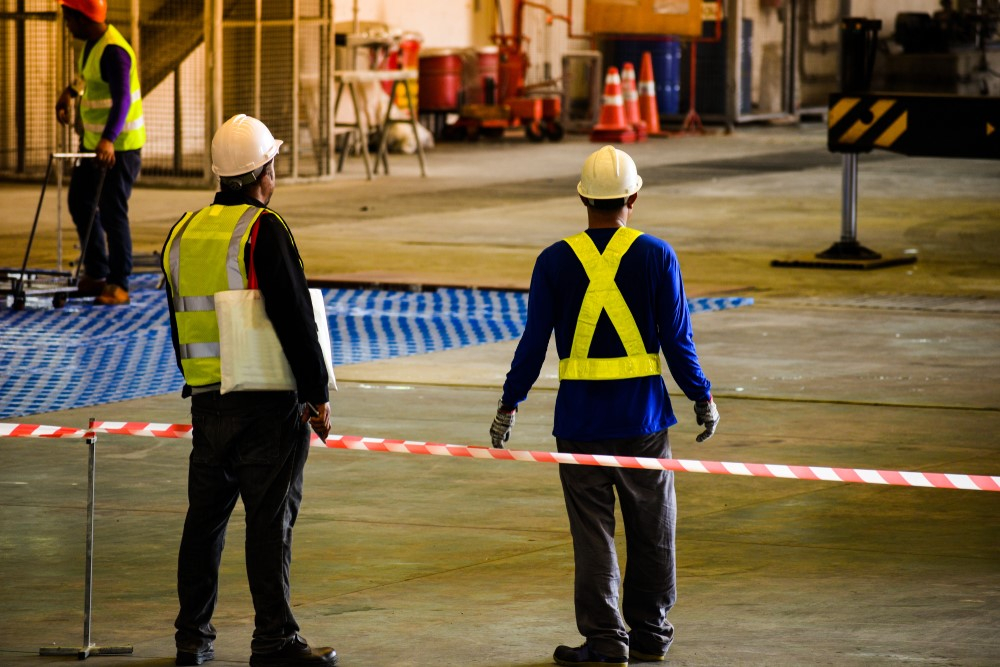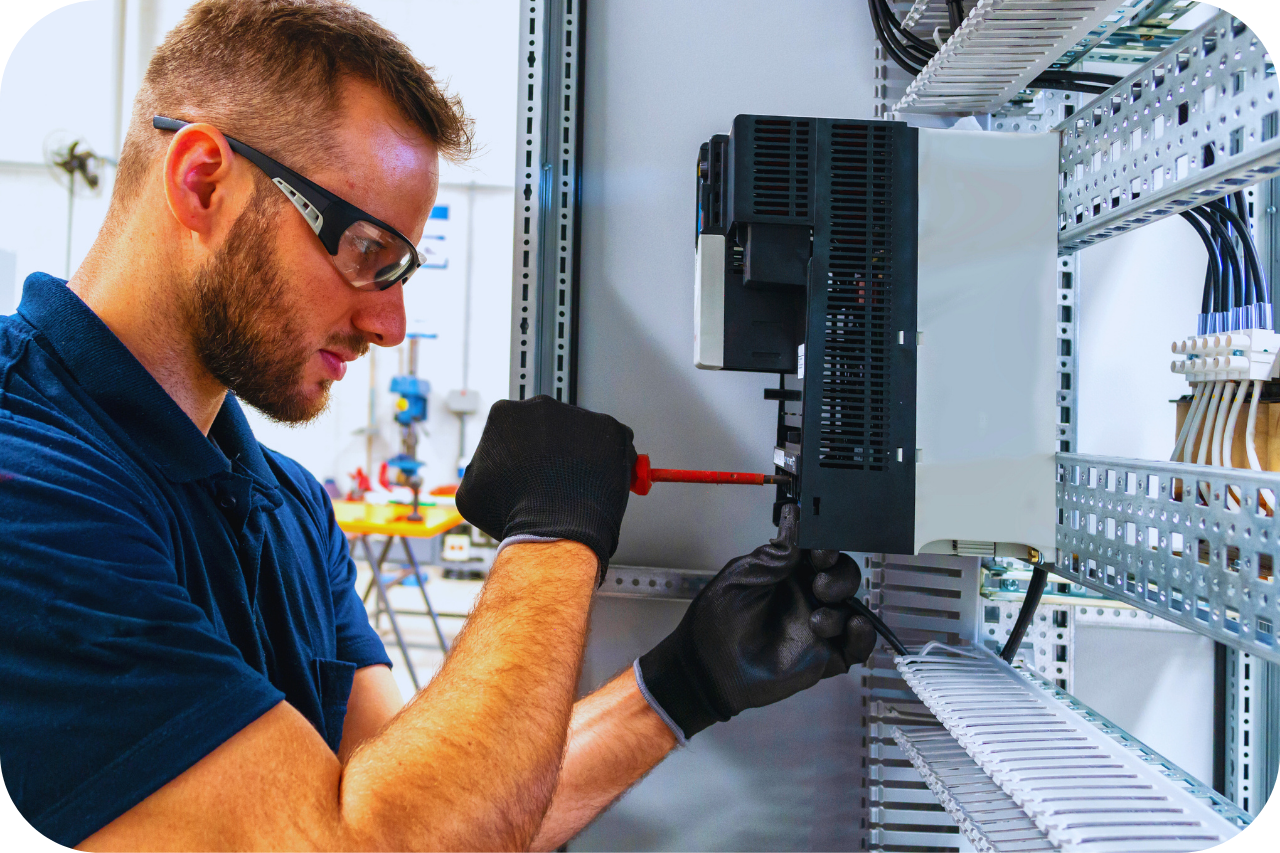The Ultimate Guide To Roar Solutions
The Ultimate Guide To Roar Solutions
Blog Article
4 Simple Techniques For Roar Solutions
Table of ContentsGet This Report on Roar SolutionsGetting My Roar Solutions To WorkThe Ultimate Guide To Roar Solutions
In such an atmosphere a fire or explosion is possible when 3 standard conditions are satisfied. This is often described as the "harmful location" or "burning" triangle. In order to safeguard installments from a prospective surge a method of analysing and classifying a potentially hazardous area is needed. The function of this is to guarantee the right choice and installment of devices to eventually prevent an explosion and to make sure safety of life.
(https://au.enrollbusiness.com/BusinessProfile/7095102/ROAR%20Solutions)
No equipment needs to be mounted where the surface area temperature level of the tools is higher than the ignition temperature of the given hazard. Below are some common dust dangerous and their minimal ignition temperature level. Coal Dust 380C 225C Polythene 420C (thaws) Methyl Cellulose 420C 320C Starch 460C 435C Flour 490C 340C Sugar 490C 460C Grain Dust 510C 300C Phenolic Material 530C > 450C Aluminium 590C > 450C PVC 700C > 450C Residue 810C 570C The probability of the threat existing in a concentration high enough to trigger an ignition will differ from location to location.
In order to classify this threat a setup is separated into areas of threat depending upon the amount of time the unsafe exists. These areas are referred to as Zones. For gases and vapours and dirts and fibres there are 3 areas. Area 0 Area 20 An unsafe atmosphere is extremely likely to be present and may be existing for extended periods of time (> 1000 hours per year) or perhaps continually Zone 1 Area 21 A dangerous environment is possible but not likely to be present for extended periods of time (> 10 450 C [842 F] A classification of T6 suggests the minimal ignition temperature is > 85 C [185 F] Hazardous location electrical tools perhaps created for use in higher ambient temperature levels. This would suggested on the rating plate e.g. EExe II C T3 Ta + 60C( This indicates at 60C ambient T3 will certainly not be exceeded) T1 T1, T2, T3, T4, T5, T6 T2 T2, T3, T4, T5, T6 T3 T3, T4, T5, T6 T4 T4, T5, T6 T5 T5, T6 T6 T6 A T Course score of T1 indicates the maximum surface temperature level produced by the tool at 40 C is 450 C. Presuming the linked T Course and Temperature rating for the devices are ideal for the location, you can always utilize a tool with an extra rigid Division ranking than required for the area. There isn't a clear answer to this question unfortunately. It actually does depend on the sort of tools and what repair work require to be carried out. Tools with specific test treatments that can not be executed in the area in order to achieve/maintain 3rd party score. Must come back to the manufacturing facility if it is before the devices's solution. Field Repair By Authorised Employee: Complex testing may not be needed nonetheless particular procedures might require to be adhered to in order for the devices to keep its 3rd party rating. Authorised personnel should be utilized to perform the job properly Repair service should be a like for like replacement. New component need to be considered as a straight replacement needing no special screening of the tools after the repair service is complete. Each item of equipment with a harmful score need to be evaluated independently. These are described at a high degree below, but also for more detailed info, please refer directly to the standards.
A Biased View of Roar Solutions
The equipment register is a comprehensive data source of tools records that includes a minimum collection of fields to identify each thing's location, technical criteria, Ex-spouse classification, age, and ecological information. This information is important for monitoring and handling the tools efficiently within harmful areas. In comparison, for regular or RBI sampling inspections, the quality will certainly be a combination of Detailed and Close evaluations. The ratio of Detailed to Close inspections will be established by the Equipment Risk, which is evaluated based on ignition danger (the possibility of a source of ignition versus the possibility of a flammable ambience )and the harmful area category
( Area 0, 1, or 2). This variant will certainly also influence the resourcing demands for work prep work. Once Great deals are defined, you can establish tasting strategies based on the sample dimension of each Great deal, which refers to the variety of random equipment things to be checked. To figure out the required example dimension, 2 facets require to be reviewed: the dimension of the Great deal and the classification of assessment, which indicates the degree of effort that need to be used( decreased, typical, or boosted )to the evaluation of the Whole lot. By combining the category of evaluation with the Lot dimension, you can after that develop the ideal denial requirements for an example, suggesting the allowed number of defective things found within that example. For more details on this process, please describe the Power Institute Guidelines. The IEC 60079 standard advises that the optimum interval in between assessments must not exceed 3 years. EEHA inspections will certainly likewise be conducted beyond RBI campaigns as component of set up upkeep and devices overhauls or repair services. These inspections can be credited towards the RBI sample sizes within the impacted Great deals. EEHA inspections are conducted to identify mistakes in electric equipment. A weighted scoring system is crucial, as a single tool may have numerous faults, each with differing degrees of ignition risk. If the mixed rating of both examinations is much less than twice the fault score, the Whole lot is considered acceptable. If the Lot is still considered inappropriate, it has to undergo a full examination or validation, which may set off more stringent inspection protocols. Accepted Lot: The reasons for any kind of faults are recognized. If a common failure mode is located, added devices might require maintenance. Faults are identified by severity( Security, Honesty, House cleaning ), making sure that urgent problems are assessed and attended to promptly to mitigate any influence on security or procedures. The EEHA data source should track and videotape the lifecycle of faults in addition to the rehabilitative activities taken. Applying a durable Risk-Based Inspection( RBI )strategy is essential for guaranteeing compliance and safety in handling Electric Devices in Hazardous Areas( EEHA) (electrical refresher course). Automated Fault Scoring and Lifecycle Management: Easily take care of faults and track their lifecycle to enhance inspection precision. The introduction of this assistance for risk-based inspection further reinforces Inspectivity's setting as a best-in-class remedy for regulatory conformity, as well as for any asset-centric examination use case. If you have an interest in finding out much more, we invite you to request a presentation and find just how our remedy can change your EEHA administration procedures.
The Best Strategy To Use For Roar Solutions

In terms of explosive risk, a hazardous location is an atmosphere in which an eruptive ambience exists (or may be expected to be present) in quantities that require special precautions for the building and construction, installation and use devices. Roar Training Solutions. In this write-up we discover the difficulties encountered in the office, the danger control actions, and the called for competencies to function securely
It is a repercussion of modern life that we manufacture, keep or handle a variety of gases or fluids that are considered combustible, and a series of dirts that are regarded combustible. These compounds can, in certain conditions, develop eruptive environments and these can have major and heartbreaking repercussions. The majority of us know with the fire triangular remove any type of one of the 3 components and the fire can not happen, but what does this mean in the context of hazardous areas? When damaging this down into its simplest terms it is essentially: a combination of a certain amount of release or leak of a particular compound or material, combining with ambient oxygen, and the existence of a resource of ignition.
In a lot of circumstances, we can do little concerning the levels of oxygen airborne, but we can have substantial influence on sources of ignition, for more instance electrical tools. Unsafe areas are recorded on the hazardous area classification drawing and are determined on-site by the triangular "EX-SPOUSE" indication. Below, amongst other vital info, areas are divided into three types depending on the hazard, the chance and period that an explosive ambience will exist; Area 0 or 20 is considered one of the most hazardous and Zone 2 or 22 is regarded the least.
Report this page